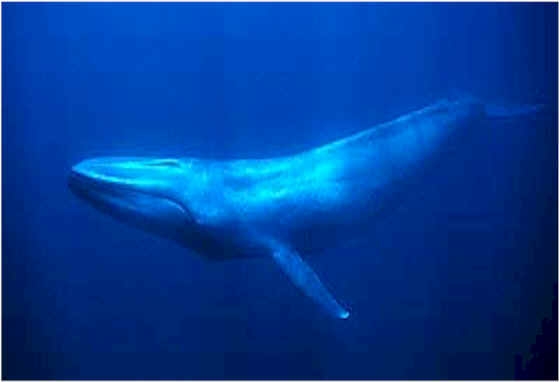|
#1
|
|||
|
|||
|
Our lovely blue planet is extraordinary for a number of reasons. The most significant of these reasons, to most of us, is the fact that it is the only place in the universe that we know for certain houses life. But on the thin film of gas and liquid that coats our planet, that life has developed in such a dazzling array of forms that even today, biologists are finding new species on a daily basis. Living things thrive in the blazing sun of arid deserts, in the crushing pressure of deep sea trenches, in the icy wastes of Antarctica, and even within the very stones beneath our feet. The adaptations that allow this versatility have created species with some very extreme features. 10. Blue Whale  The Blue Whale, known to taxonomists (those biological eggheads who make up complicated scientific names) as Balaenoptera musculus, is a baleen whale that is easily the largest of animal on the planet. Blue whales have been found that measured at up to 109 feet in length and weighing up to 200 tons. This places the blue whale far in the lead for the title of largest animal that has ever lived. No known dinosaurs, outside of a few possible theoretical species, even approach this big boyís size. |
|
#2
|
|||
|
|||
|
9. Platypus
 While it may not be the biggest, fastest, or most impressive species in the world, the little Australian oddball known as the platypus (Ornithorhynchus anatinus in geek-speak) is certainly one of the most confusing. The bizarre forces of evolution (which apparently love a good joke) that led to this animal have blessed it with a wide array of characteristics that youíre unlikely to find together outside a biology textbook. As a mammal, it is warm-blooded and furry, but is a monotreme, meaning that it lays eggs for reproduction. It has flat, webbed feet to propel it through the water, a duck-like bill for a snout, and a flat tail resembling that of a beaver. It has sensitive organs on its bill that can detect the electrical signals in the muscles of fish swimming through the water, sharp spurs, which in the males secrete a potent, though non-lethal, venom. Thatís right, itís poisonous, too. Or, rather, venomous. Turns out that thereís a difference. |
|
#3
|
|||
|
|||
|
8. Komodo Dragon
 Itís not enough that the monitor lizard known as Varanus komodoensis, or the Komodo Dragon, can grow 10 feet long and have a weight of over 150 pounds, making them the largest lizard around today. Itís not enough that they are ferocious, rapacious carnivores who, although they generally feed on carrion, can ambush and bring down a water buffalo with their jagged teeth and huge claws. Itís not even enough that their toothy mouths are awash with both venom and a soup of bacteria that almost always causes serious or fatal infection in bite wounds. If all that werenít enough, the females can lay viable eggs even if there are no males around. Iím just glad theyíre only found on a few islands in Indonesia. |
|
#4
|
|||
|
|||
|
7. Ocean Quahog
 This unassuming little shellfish, arctica islandica, which looks much like a clam and is harvested for food in many areas of the North Atlantic, including Iceland, doesnít look particularly impressive. Itís even used to top sushi on occasion, and doesnít get a lot of attention. But it has the distinction of being one of the longest-lived animals. Itís hard to tell how old they grow to be on average, but at least one specimen was brought up from the deep that had lived for over 405 years. That is, until some biologist dredged it up into the air and tested its age, which was fatal. Cíest la vie. |
|
#5
|
|||
|
|||
|
6. MRL Mouse
 Youíve seen the movies. Some scientists are working in a lab. Unbeknownst to them, mutations in the labís experimental animals have transformed some of the creatures, giving them strange new powers. And before the world is prepared, upon the unsuspecting population is unleashedÖ a little white mouse. The strain of white lab mouse known as Murphy Rothís Large (or MRL) mouse was being used for routine scientific experimentation when it was discovered that this particular mouse had the ability to not only heal from injuries inflicted on it, but to regenerate. It was able to recover from injuries without any detectable scarring, and even to re-grow toes, tails, or even vital organs, including the heart, that were destroyed or removed. Could this indicate that science could someday use this mouse to allow injured humans to regenerate lost limbs and organs? Stay tuned. Big things may be on the way. |